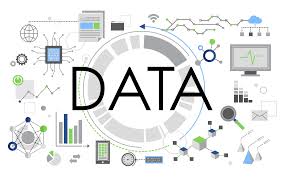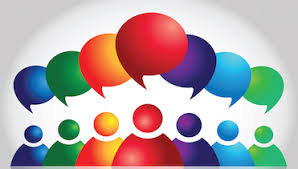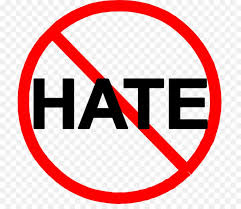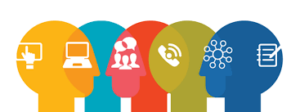Perfectionist
I have been called the “P” word more than once. I am not necessarily proud of this. I have striven to attain perfection more than once in my life. I am not necessarily ashamed of this, either.
Maria Muldaur singing “I’m a Woman,” or Helen Reddy’s “I Am Woman,” were clarion calls for many of us in the 1970s. Unfortunately, the message that I and millions of other young women (and teens) received was that we should strive to be Wonder Women and do it all. Well, I cannot and do not know anyone who can—nor should do it all.
It is neither productive nor realistic to consider myself to be perfect nor is it productive or realistic for me to expect that you are either. This realization diminishes some of the pressure that I know I have put upon myself and others (I confess to being a bit judgmental), sometimes to the detriment of being successful.
![]()
Me as a superhero with my cat, Felix, on my favorite beach
We love putting idols on pedestals. People in general want heroes and sheroes to cheer on. That’s great until those humans do what humans do and let us down. The pendulum swings and we feel that we have been hoodwinked because sometimes we have.
Fake It ‘til You Make It
One result of the Wonder Woman message was a huge number of people (regardless of gender) pretending to be doing it all or pretending to know what they were doing, when in reality, they could not and did not. Many organizations promoted employees who were considered ‘diverse’ (women, members of the LBGTQi community, Black, Indigenous and other People of Color, people with disabilities) into DEIA roles. Those individuals often were deeply passionate about inclusion and equity (as am I), but they were often set up for failure as they lacked the skills and competencies to successfully develop and implement strategies and policies intended to result in sustainable organizational change since they were not experienced DEIA practitioners. In multiple organizations they also lacked the critical key ingredient for success: the will of executive leadership. I have engaged with several organizations where the members of the C-Suite delegated their DEIA initiatives to staff members without giving them the authority needed to implement real change. (This means having the power to hold people—high ranking individuals—accountable and having fiscal control over the initiatives necessary to secure actual change (internal education and other programs). Making donations to nonprofits or academic institutions that support BIPOC individuals does not create organizational cultural change. In many cases just enough money is invested to keep the DEIA office open, but not enough to result in real change.
Paralysis
When I obsess on perfection, I become paralyzed, unable to proceed past a phrase or word that is less than perfect. And so it often is with organizational change. Those in a position to make decisions become overwhelmed by an endless stream of details, ‘urgent matters’* and meetings. (Every organization has too many meetings!) So, progress grinds to a halt. The easy path is often taken which means dusting off the same old training content (maybe updating it slightly), and forcing people to spend two or three hours reviewing the same information without sufficient time to actually have a meaningful conversation or to address the barriers that keep more organizations than I can count from really succeeding because they are not really inclusive or equitable or diverse. I continue to assert the fact that organizations must be those things in order to be sustainably successful.
So, organizations go part way down a path leading to the opportunity to really face their demons and purge them and then they stop and maybe take a few steps backward and a few more forward without ever completing the full journey only to complain about not getting where they need to be.
Progress
Moving forward requires movement, change, progress. This seems unbelievably simple and yet, here we are in stasis. We (I) intend to do good works and am stopped in my tracks by so many overwhelming bad acts. I want to solve so many problems that I cannot solve any problems. When I was conducting investigations of discrimination for the City of New York we were inundated with EEO complaints. I needed to focus and to conduct one interview at a time, read one document at a time, and review every piece of evidence, one at a time—regardless of how quickly I wanted to solve the problem (end the discriminatory conduct and hold responsible parties accountable for violating the policy and law). I had to take each step one at a time in order to make progress.
This can be frustrating and boring and tiring and annoying, but it is still necessary. Well, it is necessary if we truly want to end the discriminatory conduct and hold the people who are discriminating accountable. That takes persistence and bravery. I have quit jobs, fired clients and walked away from potential opportunities for this reason more than once in my career. It is also important to share that I can collaborate with a client on developing an exquisite strategic plan, but I cannot implement it for them. I can coach a client on giving constructive feedback and on managing team members who lack the skill or worse, the will to do what the organization needs them to do, but I cannot have those conversations or implement employee actions for them.

I have asked people what they would do (how would they solve their current problem) if they had a magic wand. I do not intend to ask that question anymore. I think that I need to ask you, “What are you willing to do the solve your problem?” The magic wand scenario doesn’t consider the work needed to solve the problem; it just allows us to visualize our desired result. The second question is much more realistic and gives us a way to measure our progress against our goals.
Two other questions that I ask that I believe may be helpful to address our current state:
Why would I strive to accomplish something without a guarantee of success?
What is the hardest thing that you have overcome?
I believe that these are realistic reflections when embarking on a mission that is challenging whether emotionally, intellectually, physically, or all three. In many cases, if we can anticipate that an endeavor will be challenging (such as applying to, getting accepted, and then attending and completing graduate school) we are not necessarily overwhelmed to the point of giving up when we actually have to do the work. This does not mean that we will not have extremely challenging periods of hard, overwhelming work, but that we can visualize the results of those efforts in a realistic way and dig into our resilience and persistence and carry on.
Inclusion—achieving actual inclusion—is not easy and never fully accomplished. So, when it is a goal for an organization, the leaders of that organization need to remind themselves and their team members of this fact. Inclusion is an evolutionary process. An ever-expanding, ever-changing goal. Inclusion requires each of us to face the fact that things we thought or said or did twenty years ago might make us cringe today. It does not mean that we get trapped or paralyzed by guilt (woulda, coulda, shoulda) or what ifs, but that we learn from experience, receiving new information, and interacting with others.
Onward!
My signature word is onward. The reason for this is that I am perpetually seeking to make progress. I hope to learn new things every day. I strive to grow my relationships into healthy, joyful, and productive collaborations (professionally and personally). I work to carry out my mission to make manifest the value of all people. None of this is possible if I am paralyzed by a need to be perfect. If I can accept this as a fact, I can move on. If I apply that knowledge to others as well as myself, I can coexist in a productive way, moving onward despite the many barriers that we all face daily.

Haʻikū Stairs, Hawaii
It is imperative when we are perfectly justified in feeling overwhelmed, depressed, angry, frustrated and disillusioned that we continue to move onward. We need to acknowledge the impact of external conditions of ourselves and our organizational cultures. What can we really control? I believe that we can control our decision to continue to move forward, even when it is painful, frightening, and exhausting. Each step forward is a declaration of our resilient love, an expression of persistent joy, and an act of strategic hope.
My focus is on helping leaders to strategically navigate the impact of external conditions on identity safety and collaboration, and how best to support employees and other strategic partners in constructive ways during challenging times.
I would love to hear from you and discuss how I can help you with your Inclusion Strategy®.
Onward!
August 27, 2025
FYI: Inclusion Strategy is not only the name of my company, I own the trademark to this expression having established first use of it decades ago.
* I may need to write a unique blog post on what we consider to be urgent versus what actually is urgent.

 For example, when I was 11 years old I was camping with my family in the Catskill Mountains in New York. My sister and I were hiking into a ravine when suddenly a pack of feral dogs appeared and began surrounding us. My sister instinctively took off running as fast as she could. I froze. Not because I wanted to or had the presence of mind to think about the best course of action to avoid being bitten or torn to shreds, but because I was terrified. This is the only instance in my life when I was actually petrified—unable to move. Watching my big sister disappear in the undergrowth added to my traumatized state. I was alone in the woods and now, as they had ample time to do so, a pack of about ten dogs of various breeds and sizes, but none of them lap dog size, surrounded me.
For example, when I was 11 years old I was camping with my family in the Catskill Mountains in New York. My sister and I were hiking into a ravine when suddenly a pack of feral dogs appeared and began surrounding us. My sister instinctively took off running as fast as she could. I froze. Not because I wanted to or had the presence of mind to think about the best course of action to avoid being bitten or torn to shreds, but because I was terrified. This is the only instance in my life when I was actually petrified—unable to move. Watching my big sister disappear in the undergrowth added to my traumatized state. I was alone in the woods and now, as they had ample time to do so, a pack of about ten dogs of various breeds and sizes, but none of them lap dog size, surrounded me.
 There is abundant data showing that employees who work in organizations that effectively and strategically incorporate diversity, equity, inclusion and access into their policies, protocols, and practices, are much happier than those who work in organizations where these concepts are not valued.5 More people apply for jobs at these organizations—more highly qualified people. Turnover is diminished, law suits are less common, and engagement and productivity are higher.
There is abundant data showing that employees who work in organizations that effectively and strategically incorporate diversity, equity, inclusion and access into their policies, protocols, and practices, are much happier than those who work in organizations where these concepts are not valued.5 More people apply for jobs at these organizations—more highly qualified people. Turnover is diminished, law suits are less common, and engagement and productivity are higher. I recommend showing and telling. Meaning, we need to share the ample evidence that being around diverse human beings is healthy for us as individuals, organizations, and communities; that being inclusive: collaborating with others in an interdependent way is incredibly efficient, effective, and makes us happier; that having equity means that we all have a right to the same protections and; that having accessibility does not just benefit those who have been historically excluded based on having a disability, but provides all of us the opportunity to collaborate with more people.
I recommend showing and telling. Meaning, we need to share the ample evidence that being around diverse human beings is healthy for us as individuals, organizations, and communities; that being inclusive: collaborating with others in an interdependent way is incredibly efficient, effective, and makes us happier; that having equity means that we all have a right to the same protections and; that having accessibility does not just benefit those who have been historically excluded based on having a disability, but provides all of us the opportunity to collaborate with more people.





